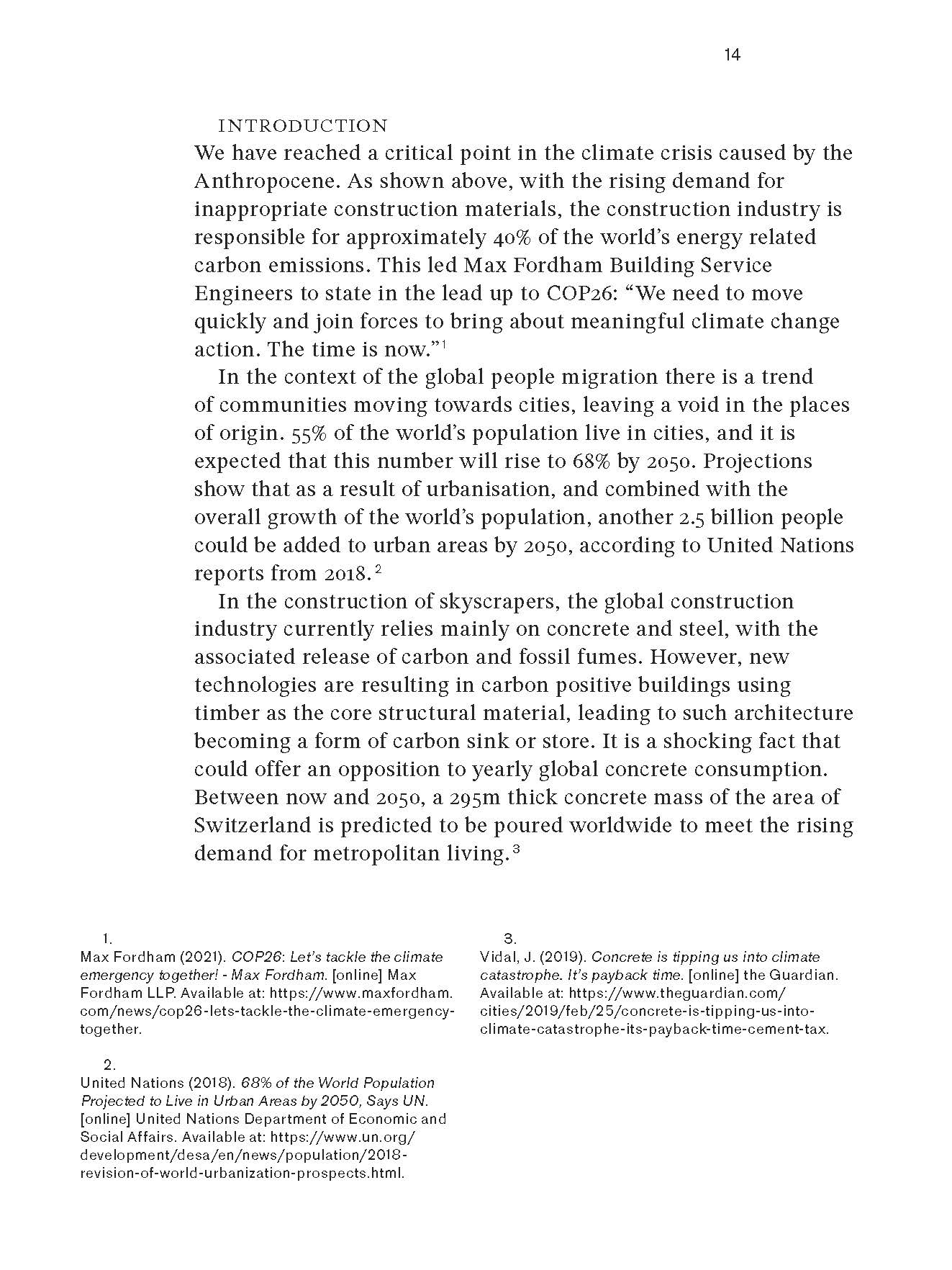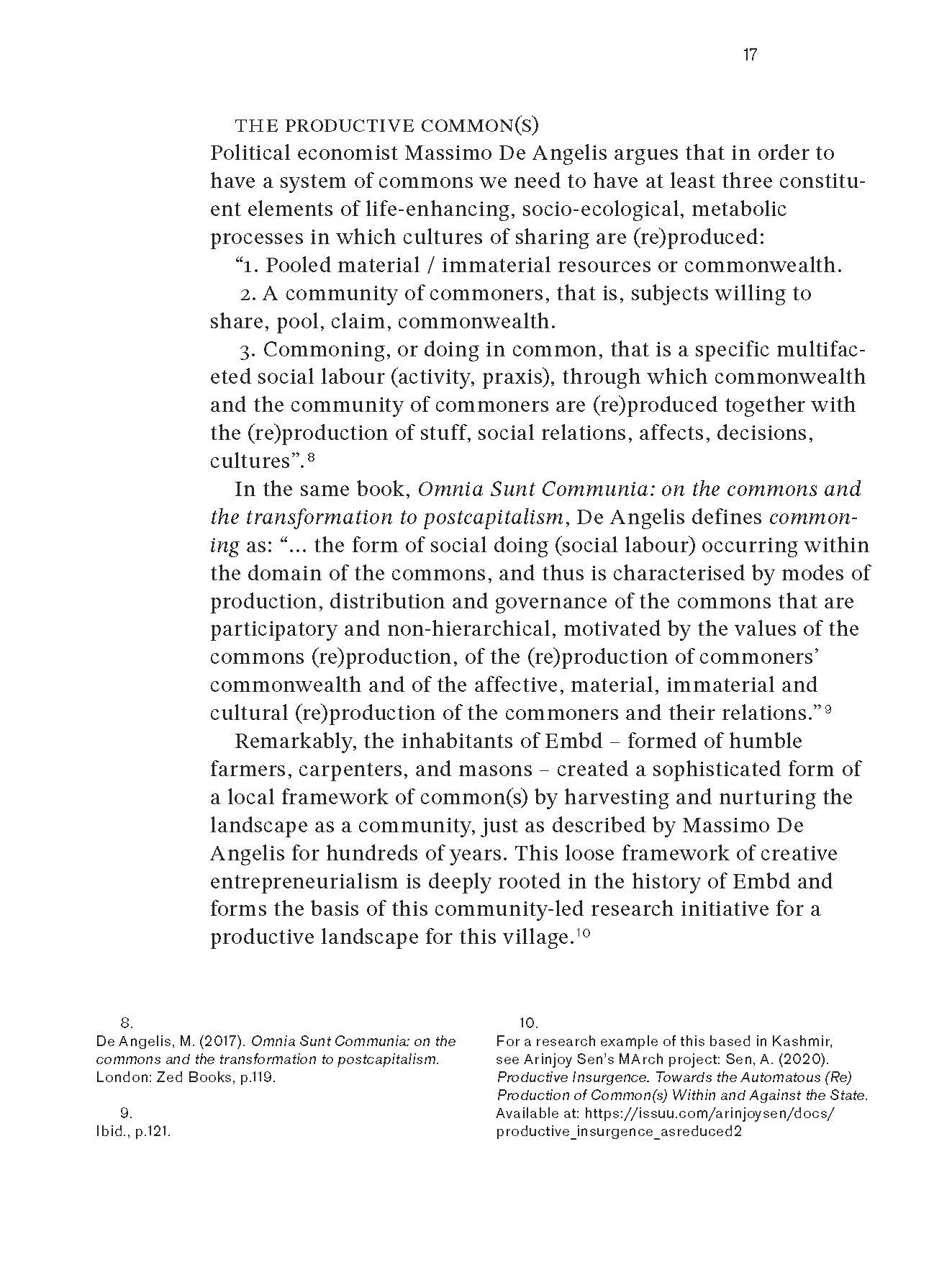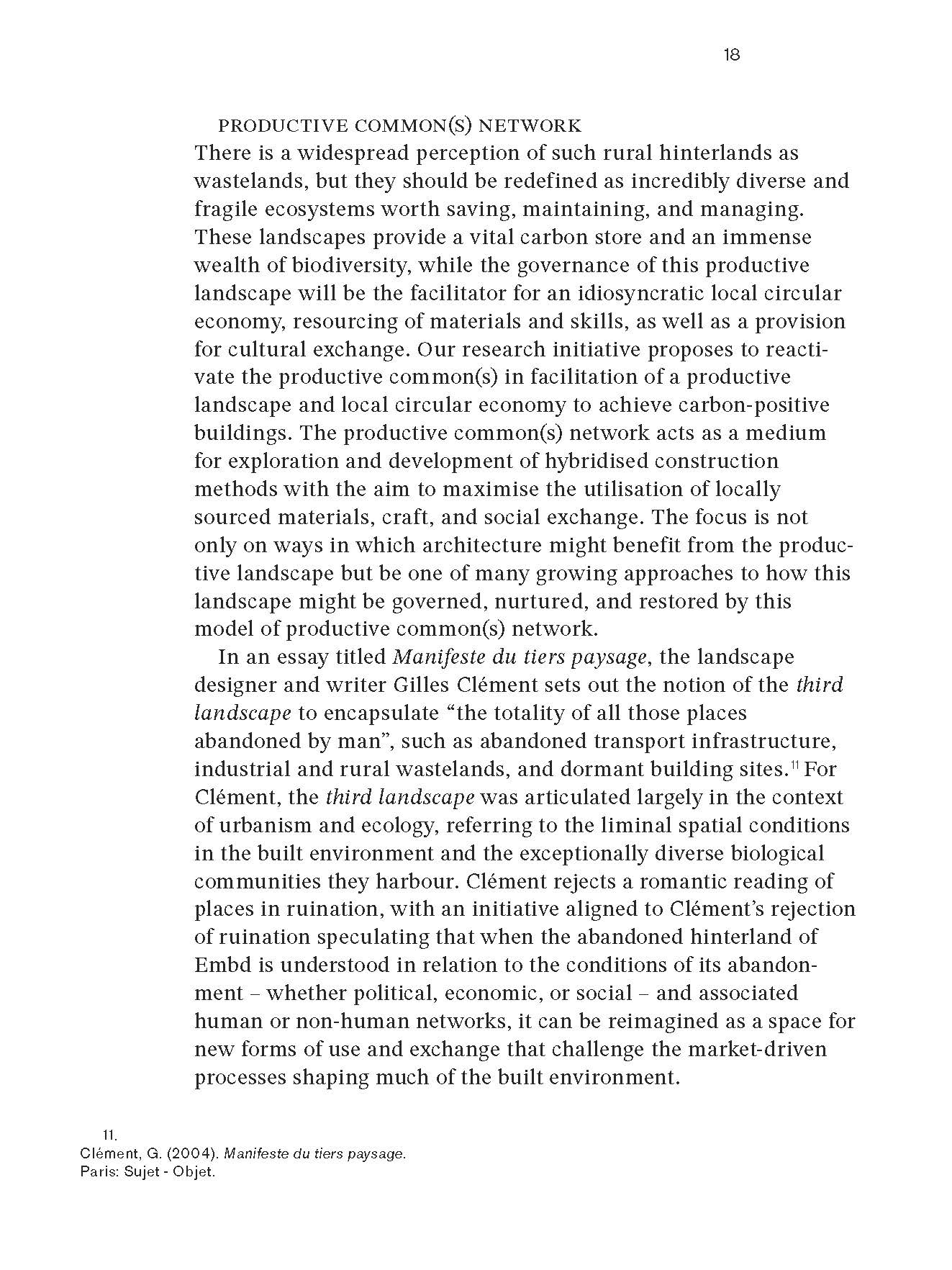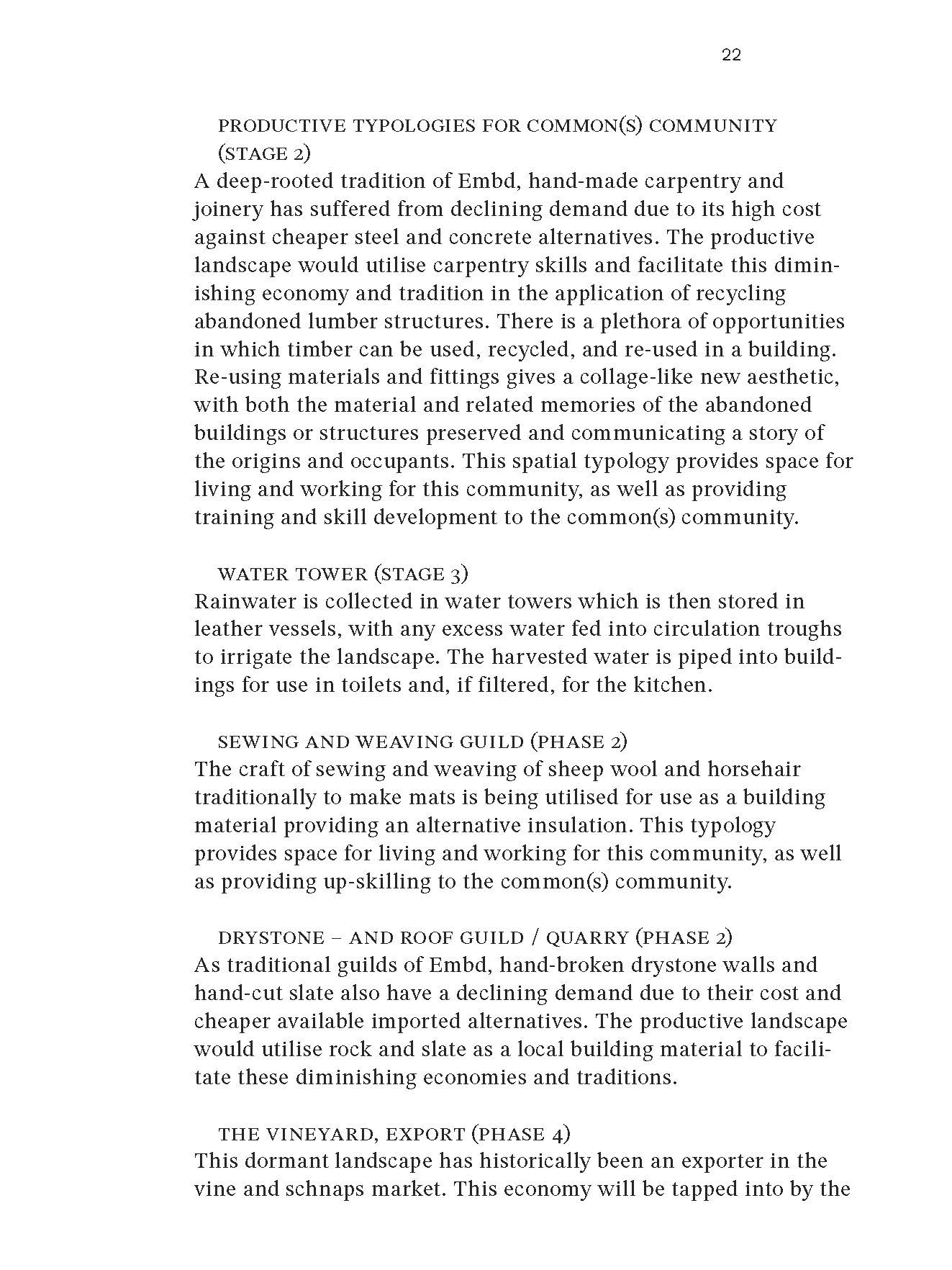A community-led initiative for a productive landscape
Stefan Lengen, Ali Shaw & Mert Özbolat
DOC 234—34/2




Terra 2022
Lisbon Architecture Triennale 29 September to 5 December 2022
Lisbon Architecture Triennale 29 September to 5 December 2022
Published research in Lisbon Triennale 2022
abstract
How can design research endeavour to address the climate emergency with an innovative community-led initiative? The territory our research focused on is Embd, Switzerland, a rural farming village 1450m above sea level and part of the alpine hinterland covering a total area of 4000km² of wood and grassland across Switzerland – the largest continuous hinterland in the Alps. This remote territory formed a local framework of common(s) ownership and land governance that facilitated a natural circular economy for hundreds of years, but sadly it is a landscape – otherwise productive – that has been largely abandoned since the 1970’s due to population migration to urban centres with economic, social, and cultural advantages and opportunities. Today, Embd has a population of just 331.
This design research explores strategies to reactivate these productive landscapes and dormant building structures to reverse the trend of abandonment by facilitating a circular economy within the common(s) network in collaboration with local communities, trade, stakeholders, and the planning authorities. This method of work explores participatory design principles, advocating collaborative work, local material sourcing and innovative construction methodologies that address whole-life approaches.
Book : Emerging voices on new architectural ecologies
Editors: Cristina Verissimo, Diogo Burnay
ISBN [volume 1]: 978-989-53836-2-7
You can read the research down below by grid images.
abstract
How can design research endeavour to address the climate emergency with an innovative community-led initiative? The territory our research focused on is Embd, Switzerland, a rural farming village 1450m above sea level and part of the alpine hinterland covering a total area of 4000km² of wood and grassland across Switzerland – the largest continuous hinterland in the Alps. This remote territory formed a local framework of common(s) ownership and land governance that facilitated a natural circular economy for hundreds of years, but sadly it is a landscape – otherwise productive – that has been largely abandoned since the 1970’s due to population migration to urban centres with economic, social, and cultural advantages and opportunities. Today, Embd has a population of just 331.
This design research explores strategies to reactivate these productive landscapes and dormant building structures to reverse the trend of abandonment by facilitating a circular economy within the common(s) network in collaboration with local communities, trade, stakeholders, and the planning authorities. This method of work explores participatory design principles, advocating collaborative work, local material sourcing and innovative construction methodologies that address whole-life approaches.
Book : Emerging voices on new architectural ecologies
Editors: Cristina Verissimo, Diogo Burnay
ISBN [volume 1]: 978-989-53836-2-7
You can read the research down below by grid images.












